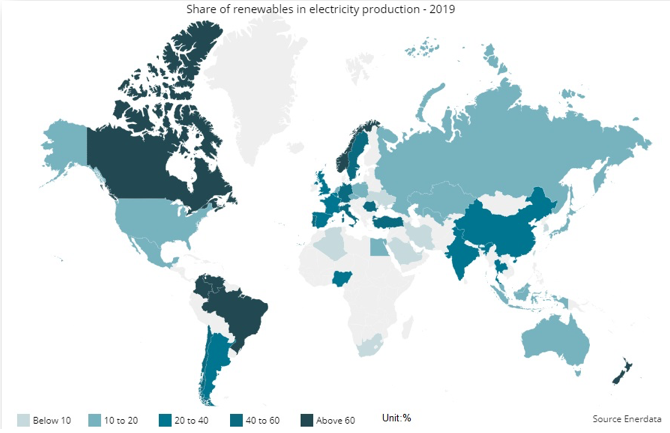 Our Company spends considerable time and effort to gauge and evaluate the potential for Environmental Risk and to determine that appropriate measures are in place to appropriately guard against or mitigate those risks. The measures are taken span a wide range of topics, as appropriate to the specifics of the Business activities to be undertaken. For example, the programs we undertake in place are explained further below.
Our Company spends considerable time and effort to gauge and evaluate the potential for Environmental Risk and to determine that appropriate measures are in place to appropriately guard against or mitigate those risks. The measures are taken span a wide range of topics, as appropriate to the specifics of the Business activities to be undertaken. For example, the programs we undertake in place are explained further below.
Pre-planning and resource identification to assure quick response to oil spill accidents. This includes memberships with the various response and spill remediation organizations whose physical assets and personnel are staged in several locations around the world. Coupled to these are emergency notification phone numbers to which events can be reported. All calls will be answered by a live person who can connect with near universal language translation services and can not only provide immediate information about the accident but will also actively ensure that notification is provided to appropriate ALFURQAN’s staff as may be needed to address a situation wherever the accident is linked to any of our activities.
Emission Inventories, Discharge Monitoring, and Greenhouse Gas Reporting:
Specific to each business or operation, the local management also regularly monitor and advise upon developing regulations and standards. In this manner, our company strives to ensure its businesses and operations are not only compliant with existing standards or obligations but are actively engaged in looking at future improvements.
As appropriate to each business or operation, the local operations maintain day-to-day tracking of attributes related to the specifics of those assets. This includes an extremely broad range of considerations including tracking throughputs of physical characteristics of the materials being handled, proper operation of emission recovery or control systems, and so on.
There are many impacts of climate change on companies at a global level. It creates several new business risks, besides the most obvious physical risks (e.g. the operational impacts of serious weather events, or supply shortages caused by water scarcity). Companies are exposed to transition risks that arise from society’s reaction to climate change, such as changes in technologies, markets, and regulation that can affect business costs, undermine the viability of existing products or services, or affect asset values. We can’t ignore the potential liability for emitting GHG which is caused by fossil fuel companies and utilities in recent years as it is considered a serious affecting element in the climate change subject.
However, climate change also offers business opportunities on the other hand. In the first place, companies can target to improve their resource productivity (e.g. by increasing energy efficiency), so that to reduce their costs. In the second place, climate change can stimulate innovation, inspiring new products and services which have lesser carbon-intensive or which enable carbon reduction by others. Lastly, we can say that companies can enhance the resilience of their supply chains, e.g. by reducing reliance on price-volatile fossil fuels by shifting towards renewable energy. So that such actions can promote competitiveness and unlock new market opportunities.
As we know that Taskforce for climate-related financial disclosure (TCFD) has created four key disciplines through which companies are expected to address climate change: governance, strategy, risk management, metrics, and targets.
Table 1: TCFD Recommendations
Core Elements of Recommended Climate-Related Financial Disclosures | |||
Governance | Strategy | Risk Management | Metrics & Targets |
The organization’s governance around climate-related risks and opportunities | The actual and potential impacts of climate-related risks and opportunities on the organization’s businesses, strategy, and financial planning | The processes used by the organization to identify, assess, and manage climate-related risks | The metrics and targets used to assess and manage relevant climate-related risks and opportunities |
Recommendations and; | |||
Disclose the organization’s governance around climate-related risks and opportunities. | Disclose the actual and potential impacts of climate-related risks and opportunities on the organization’s businesses, strategy, and financial planning where such information is material | Disclose how the organization identifies, assesses, and manages climate-related risks. | Disclose the metrics and targets used to assess and manage relevant climate-related risks and opportunities where such information is material. |
Supporting Recommended Disclosures | |||
a) Describe the board’s oversight of climate-related risks and opportunities. | a) Describe the climate-related risks and opportunities the organization has identified over the short, medium, and long term. | a) Describe the organization’s processes for identifying and assessing climate-related risks | a) Disclose the metrics used by the organization to assess climate-related risks and opportunities in line with its strategy and risk management process. |
b) Describe management’s role in assessing and managing climate-related risks and opportunities | b) Describe the impact of climate-related risks and opportunities on the organization’s businesses, strategy, and financial planning. | b) Describe the organization’s processes for managing climate-related risks. | b) Disclose Scope 1, Scope 2, and, if appropriate, Scope 3 greenhouse gas (GHG) emissions, and the related risks. |
c) Describe the resilience of the organization’s strategy, taking into consideration different climate-related scenarios, including a 2°C or lower scenario. | c) Describe how processes for identifying, assessing, and managing climate-related risks are integrated into the organization’s overall risk management. | c) Describe the targets used by the organization to manage climate-related risks and opportunities and performance against targets. | |
We at AFURQAN trying to do our best to adopt those recommendations through our business policy and strategy implementation and be adequately efficient in this regard.
The down pinned figure is showing the contribution of renewable energy resources in the world’s electricity production as per country and illustrates the need to increase this contribution. Though we are trying our best to focus on working on it at any available opportunity.

ALFURQAN © 2024 I Privacy policy I Site by Arctic Bee